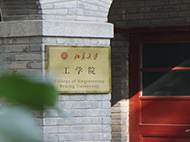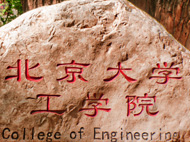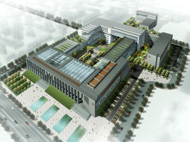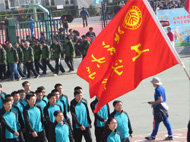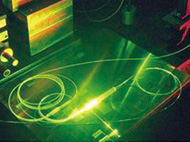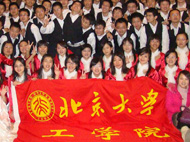主 办:生物医学工程系
报告人:Prof. Gilson Khang
时 间:9:00
地 点:廖凯原楼2-401会议室
主持人:葛子钢 研究员
报告一:Recent Advances of the Commercialization for Tissue Engineered and Regenerative Products in Korea
报告二:Scaffold Design for the Reduction of Host Tissue Response for Regenerative Medicine
报告人简介:
Prof. Gilson Khang
Department of BIN Fusion Technology & PolymerNano Science & Technology,
Chonbuk National University, 664‐14, Dukjin, Jeonju 561‐756, Korea
报告一内容摘要:
In Korea, there are launching in market as eighteen products related with regenerative medicinal products including cell therapy products and tissue engineered products (TEMPs) from 2001 up to now. First approved one on 2001, Chondron as autologous chondrocytes for the treatment chondyle defects are sailing steadily around last 10 years. Also, keratinocyte from autologous or allogenous as HalodermTM and KalodermTM have been developed the treatment of burn patients resulting in relatively success treatment for patients during last 7 ~ 10 years.
Very recently, Hearticellgram-AMITM developed by FCB-Pharmicell was approved by the Korea Food & Drug Administration (KFDA) as the world’s first stem cell treatment for clinical use for heart attack patients in July 2011. KFDA approved two treatments such as Medipost’s CartistemTM for the treatment of osteoarthrisis using allogenic adult bone marrow derived stem cell (BMSC) and Anterogen’s CupistemTM for the treatment of Crohn’s disease using autologous adult adipose derived stem cell (ADSC), registering both as the world’s second and third authorized stem cell procedures in Jan 2012. Among these, the Cartistem treatment is the world’s first allogeneic stem cell treatment which is advantageous because it has a higher mass-production potential and consistent treatment efficacy.
Even though these activities might be still infancy for the industrialization in Korea, it looks like a good sign for the treatment for patients. Commercialized products have been limited in cell therapy products rather than TEMPs since cell therapy can be only the injection of stem cell via vein or aorta to injury site.
In this presentation, we will discuss about the main hurdle of FDA approval at each country, recent trends of commercialization circumstances for the worldwide as well as the future direction of the development of TEMPS.
报告二内容摘要:
Implanted biomaterials and drug delivery vehicles have been reported to induce sequential events of immunologic reactions in response to injury caused by implantation procedures and result in acute inflammation marked by a dense infiltration of inflammation‐mediating cells at the materials‐tissue interface.
Poly(lactide-co-gllycolide)(PLGA) is a member of a group of poly(α‐hydroxy acid) that is among the few synthetic polymers approved for human clinical use by FDA. Consequently, it has been extensively used and tested for scaffold materials as a bioerodible material due to good biocompatibility, relatively good mechanical property, lower toxicity and controllable biodegradability. PLGA degrades by nonspecific hydrolytic scission of their ester bonds into their original monomer, lactic acid and glycolic acid. During these processes, there is very minimal systemic toxicity, however, in some cases, their acidic degradation products can decrease the pH in the surrounding tissue that result in local inflammatory reaction and potentially poor tissue development.
Currently, biomaterials are endowed with biocompatibility through three different methods which are: coating with hydrophilic molecules, modifying surface characteristics using physiochemical methods and impregnating bioactive substances. In our laboratory, the natural/synthetic nano-hybrid scaffolds have been investigated such as small intestine submucosa (SIS), demineralized bone particles (DBP), DBP gel, fibrin, keratin, hyaluronic acid, collagen gel, silk and a 2‐methacryloyloxyethyl phosphorylcholine (MPC) polymer (PMEH) with PLGA to reduce cellular inflammatory response. In this lecture, we introduced synthetic/natural nanohybrid as DBP/PLGA and SIS/PLGA scaffold in terms of scaffold design for the reduction of host response and the augmentation of tissue formation. This information will be supporting the basic strategy for the scaffold design with better improved biocompatibility.
欢迎广大老师和员工参加!


